Think of Middle-earth, and your mind likely drifts towards the Hobbiton movie set in New Zealand. It would be very difficult to imagine it anywhere else.
But long before Peter Jackson filmed The Lord of the Rings trilogy in New Zealand, English writer J.R.R. Tolkien drew from various destinations around the world to build his Middle-earth. And for the more fantastical locations, he was influenced by the memory of a country he had travelled to when he was only 19 years old: Switzerland.
Few people know that Switzerland boasts several enchanting landscapes that have become essential locations in The Lord of the Rings — if not in the world of the movies, then in the letters and illustrations of J.R.R. Tolkien himself.
Also read: 15 Reasons Why You Must Visit Switzerland
The secret valley of Rivendell in Lauterbrunnen
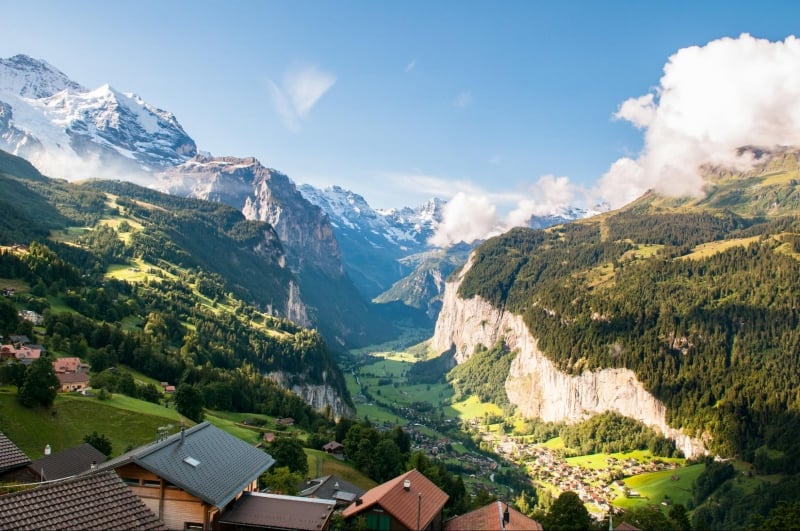
Image credit: Ben & Gab
In Switzerland, you are just as likely to pass through bucolic farmlands as well as lofty mountains slicing the sky. Densely wooded forests and rushing rivers where horses can gallop through. Wide plains that become battlegrounds for armies. And beneath the mountain slopes lies an abundance of trees; so many, that if they were to rise and walk, it would be more than enough to turn the battle in anyone’s favour.
Thanks to its geographic diversity, Switzerland has plenty of landscapes that can match the high-stakes drama of epic fantasy. Furthermore, it also has idyllic lakeside towns and villages that resemble peacetime locations such as the Shire.
In fact, Tolkien drew inspiration from a quaint village named Lauterbrunnen to create his vision for Rivendell. The main difference between the two places? Elves!
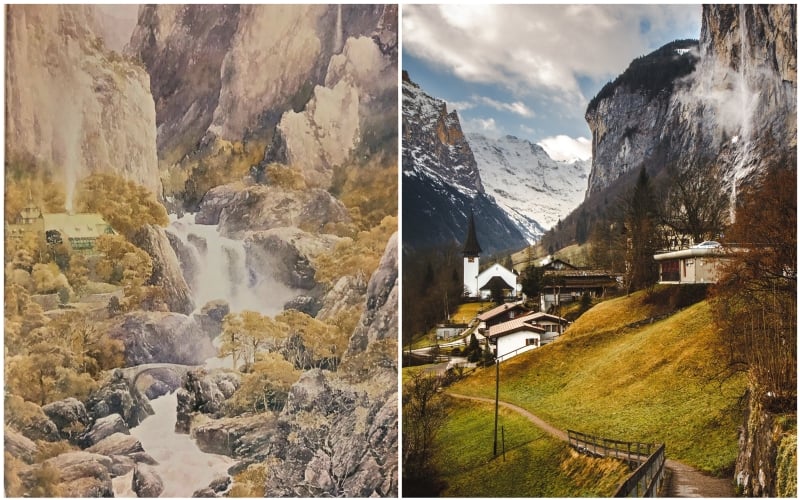
Alan Lee | Image credit: Therese Sta. Maria (left); Petr Meissner (right)
Known as the “last hospitable place east of the sea,” Rivendell is home to the elves and the kingdom of Elrond. Here, the heroes gathered in front of the Council of Elrond to discuss what would become of the One Ring, as well as who would bring it to Mordor to destroy it. Against a backdrop of waterfalls and beautiful cliffs — a striking picture of Lauterbrunnen — the Fellowship was born.
And in The Hobbit, the fair valley of Rivendell becomes a refuge for another set of travellers: Bilbo Baggins, Gandalf, and the dwarves.
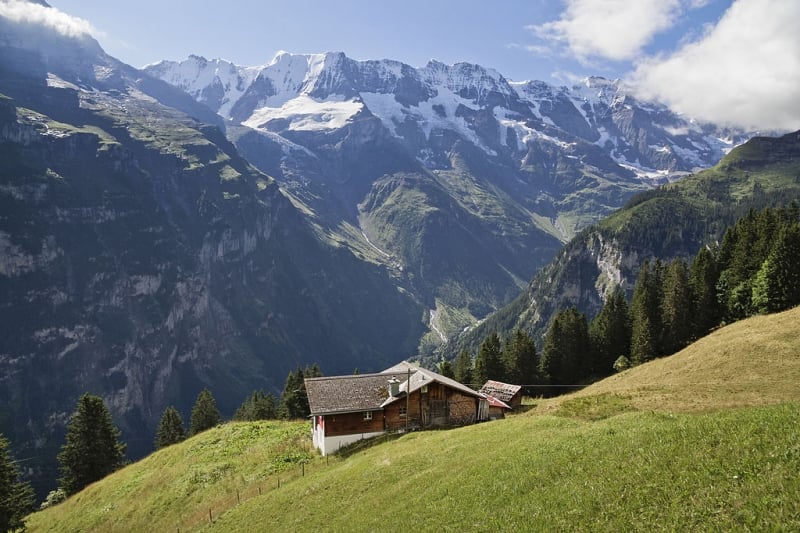
Image credit: Ximonic
It’s impossible not to hear the whistle and flute of The Lord of the Rings soundtrack as you make your way through the quiet meadows of the valley. From Lauterbrunnen, you can also head to Wengen-Kleine Scheidegg, where you can get on a train that will take you all the way up to Jungfraujoch — the highest peak in Switzerland.
Also read: My Journey to Jungfraujoch, the Top of Europe
The Misty Mountains in Eiger, Mönch, and Jungfrau
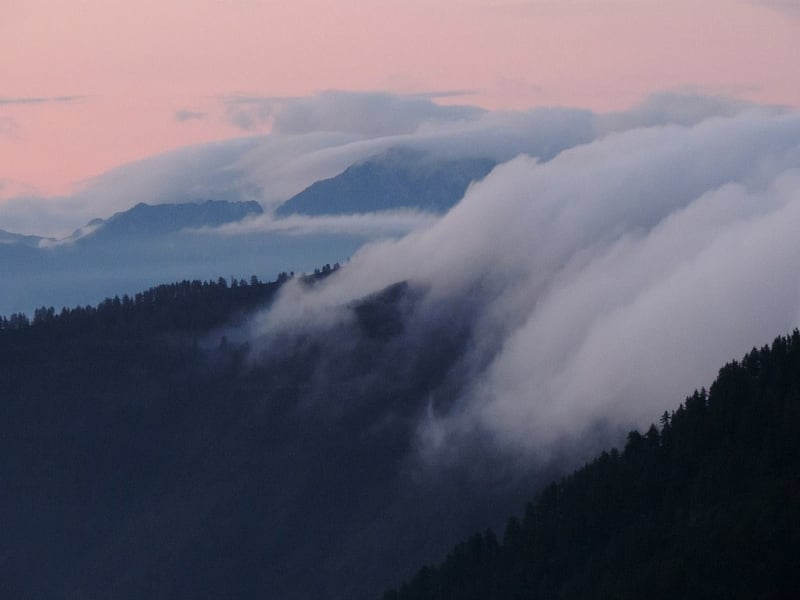
Image credit: Roberto Zanon
In a letter he wrote to his son Michael on 25 August 1967, Tolkien recalled the Swiss Alps: “I am delighted that you have made the acquaintance of Switzerland, and of the very part that I once knew best and which had the deepest effect on me. The hobbit’s journey from Rivendell to the other side of the Misty Mountains, including the glissade down the slithering stones into the pine woods, is based on my adventures in 1911.”
After witnessing the waterfalls at Lauterbrunnen, Tolkien continued farther on to Kleine Scheidegg. He stopped at the town of Grindelwald, where he marvelled at the white-covered peaks of the Eiger, Mönch, and Jungfrau mountains.
Having glimpsed the Swiss Alps for the first time, Tolkien felt captivated by the ethereal beauty of the ranges. Eventually, his fascination for these majestic summits would translate on the page to — you guessed it — the Misty Mountains! Just another place in The Lord of the Rings that Switzerland has inspired.
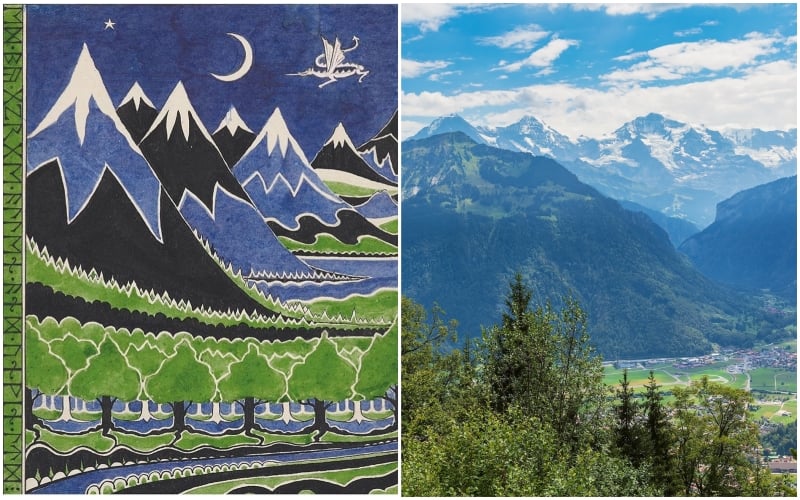
J.R.R. Tolkien | Image credit: The Morgan Library & Museum Official Instagram Page (left); Denis Linine (right)
If you look at the original dust jacket of The Hobbit today, the verdant trees and snowy tops of the Swiss Alps appear in Tolkien’s illustrations. Just as the Alps are a defining feature of Switzerland, you can see how important the Misty Mountains are to the geography of Middle-earth.
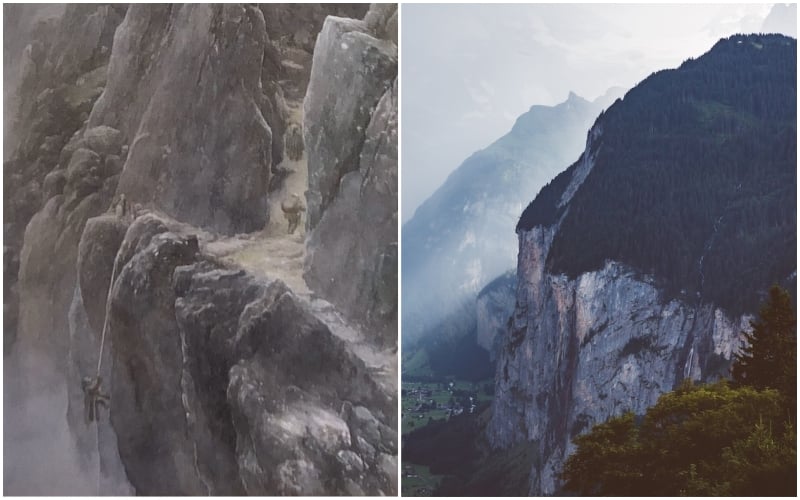
Alan Lee | Image credit: Therese Sta. Maria (left); leonid_tit (right)
Hanging on to the steep face of the Misty Mountains, Bilbo Baggins and the dwarves are threatened by falling boulders, stone giants, and a storm. If the Alps in Switzerland are anything like what the pages of The Lord of the Rings suggest — alive, volatile, mysterious, insurmountable — it’s no surprise that Tolkien was both mystified and enchanted by them.
Gandalf’s battle with the Balrog in Silberhorn

Image credit: Roland Donzé
Everyone remembers the moment in The Fellowship of the Ring when Gandalf the Grey stays behind to fight the Balrog. Lifting his staff, he shouts, “You shall not pass!” Then he destroys the bridge on the mountain, sending the Balrog down into the abyss. This is the mountain where that happens.
The pyramid-shaped mountain called the Silberhorn isn’t as colossal as the Jungfrau. Still, it must have left a lasting mark on Tolkien, who wrote the epic battle between wizard and monster at the highest point in Silvertine — a mountain similar to the shape of the Silberhorn.
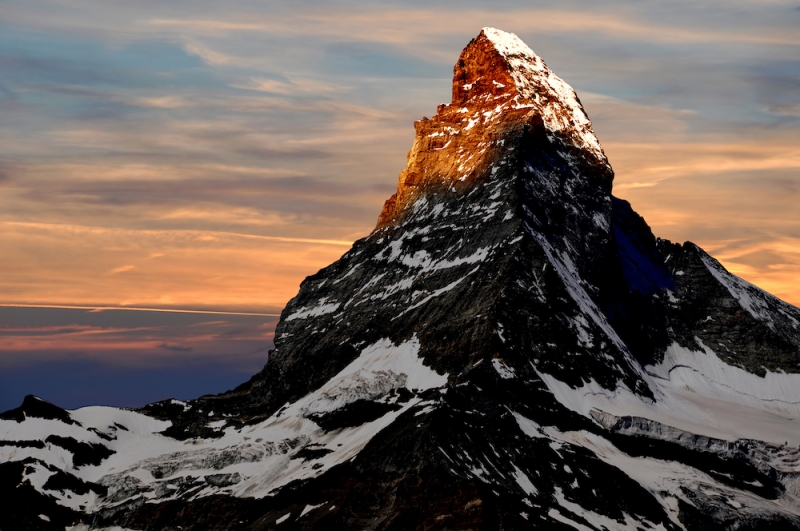
Image credit: vencavolrab
Coincidentally, Tolkien also had his own near-death encounter when he almost fell into a crevasse in the snow in Zermatt, a ski resort village below the wave-like crest of the Matterhorn. That’s a little scary to think about — a world without Tolkien and The Lord of the Rings! But it just goes to show that some of the best stories are lived experiences first.
Also read: Swiss Bucket List: Switzerland Destinations With Best Views
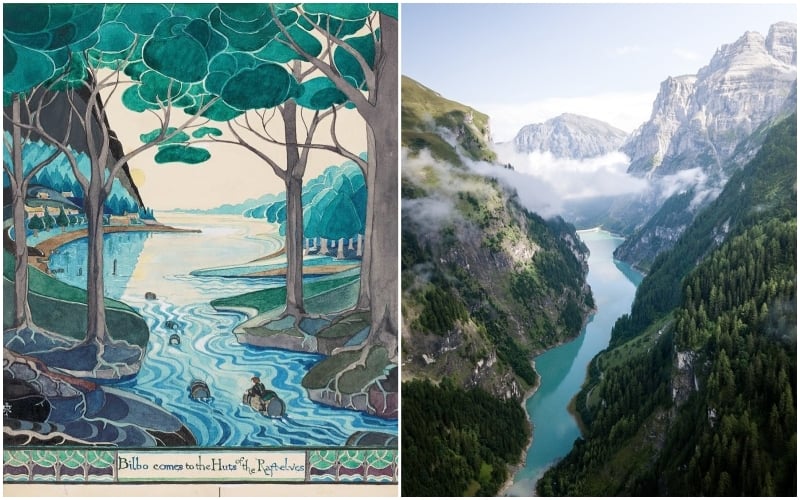
J.R.R. Tolkien | Image credit: The Morgan Library & Museum Official Instagram Page (left); 6346023 (right)
If you’re looking for a little slice of The Lord of the Rings in Switzerland, you won’t ever come up short. Switzerland holds such a magnetic beauty and power over the imagination that it will be incredibly difficult to leave it.
Expressing his sadness at departing the country, Tolkien said this: “I left the view of Jungfrau with deep regret: eternal snow, etched as it seemed against eternal sunshine.”
Also read: 10 Disney Movies and the Real Places That Inspired Them
As Tolkien’s The Lord of the Rings continues to sell copies and reach new audiences, intrepid travellers can still enjoy the natural splendour of Middle-earth, from alpine wonders to peaceful villages beneath a mountain. And you never know, it might just be your next unexpected journey.




